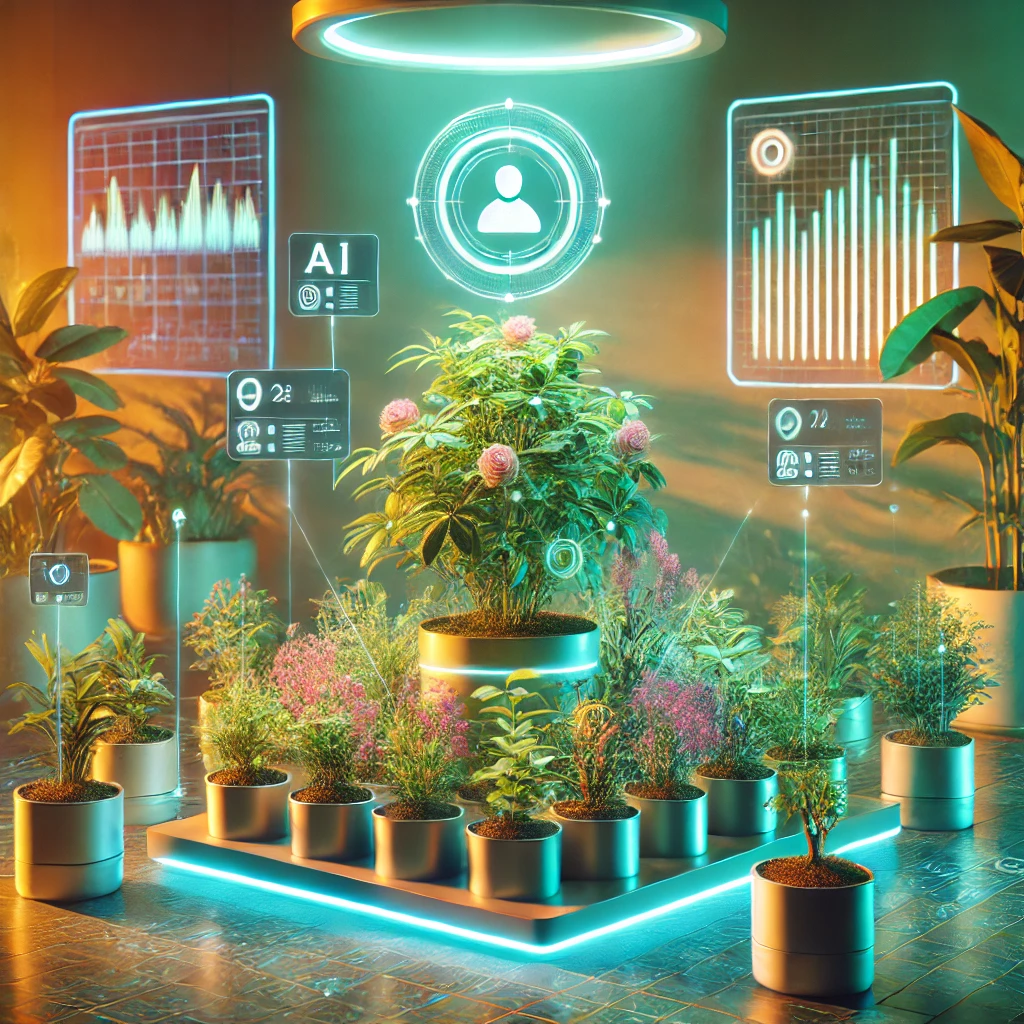Technology is revolutionizing plant care, making it easier to detect and prevent issues before they cause serious damage. AI-powered plant monitoring combines smart sensors, machine learning, and real-time data analysis to identify plant diseases, dehydration, and nutrient deficiencies. These advanced systems help home gardeners and large-scale farmers maintain healthier plants with minimal effort.
1. How AI-Powered Plant Monitoring Works
AI-driven plant monitoring systems use smart sensors to collect real-time data on various environmental factors, including:
- Soil moisture levels – Ensures plants receive the right amount of water.
- Nutrient content – Detects deficiencies in essential minerals.
- Temperature and humidity – Helps maintain optimal growing conditions.
- Light exposure – Monitors if plants are receiving adequate light.
- Disease detection – Identifies early signs of fungal or bacterial infections.
By analyzing this data, AI algorithms predict potential issues before they become visible, allowing growers to take action before plants suffer.
2. Detecting Issues Before They Happen
Traditional plant care relies on visible symptoms, but AI-powered sensors detect problems early based on subtle environmental changes. Here’s how:
- Dehydration Detection: Sensors measure soil moisture and temperature fluctuations, alerting users before plants show wilting.
- Nutrient Deficiencies: AI analyzes leaf color and growth patterns to identify lacking minerals, ensuring precise fertilization.
- Disease Prevention: Image recognition technology scans leaves for early signs of fungal infections, bacterial diseases, or pest infestations, preventing widespread damage.
3. Smart Sensors for Home and Commercial Use
AI-powered monitoring systems are available for both home gardening and large-scale agriculture. Some popular smart sensors include:
- Wireless soil monitors – Measure moisture, pH, and nutrients in real-time.
- AI-driven camera systems – Use image analysis to detect leaf discoloration and pest damage.
- Smart irrigation controllers – Adjust watering schedules based on plant needs.
These tools reduce plant losses, improve yield quality, and save resources by optimizing water and fertilizer use.
4. The Future of AI in Plant Care
As AI technology advances, plant monitoring systems will become even more accurate, accessible, and autonomous. Future innovations may include:
- Self-adjusting nutrient delivery systems – AI-powered hydroponic setups that balance nutrients automatically.
- AI-driven plant care apps – Smartphone integrations that diagnose plant health using a simple photo.
- Predictive plant health models – Systems that anticipate issues based on seasonal and environmental patterns.
Conclusion
AI-powered plant monitoring is transforming the way we grow and care for plants. With real-time data analysis, early issue detection, and automated care, these systems make gardening smarter, more efficient, and more sustainable. Whether you’re a home gardener or a commercial farmer, AI technology can help ensure healthier plants with less effort.

Leave a Reply